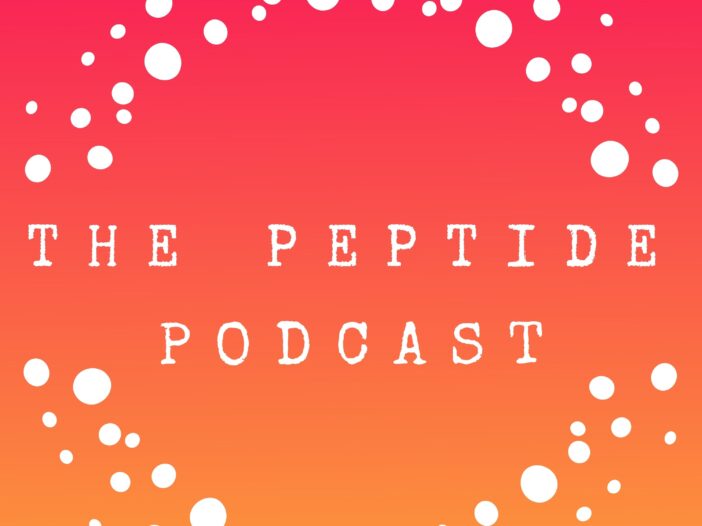
Before we jump in, I want to quickly address a few comments I have received about the content here. Normally, I wouldn’t spend time on something like this, but just for clarity — I have over nine years of formal education, including a Doctorate in Pharmacy, and sixteen years of clinical experience. That includes serving as an adjunct professor at a U.S. pharmacy school and working in oncology and inflammatory disease at a teaching hospital.
And yes — for now, you just hear my voice, but that may change. I do plan to incorporate video in the future; I’ve simply held off because it takes significantly more time to produce, and my priority has been getting the education out to you consistently.
Remember, the content is free and meant for education. If it’s not for you, that’s completely fine — you don’t have to listen. It takes a lot of time and energy to put this together, and tuning in is entirely your choice.
For my other listeners, thank you for your support and gratitude over the past few years.
Now, today we’re diving into a compound ATX‑304.
It’s often referred to as “exercise in a pill”. And after we go through the science together you’ll see why. We’ll cover the back‑story, how it works, how it differs from typical mitochondrial supplements, animal and human data so far, who this may and may not be for — and importantly, what to watch out for.
The Backstory & Why It’s Getting Attention
ATX-304, was first developed in Sweden by Betagenon AB as a small-molecule AMPK activator designed to mimic the metabolic benefits of exercise and caloric restriction — with the goal of improving obesity, insulin resistance, and overall metabolic health. Early preclinical work in obese and diabetic mice showed impressive results, including better glucose uptake, enhanced fat-burning, improved insulin sensitivity, and even cardiovascular benefits.
Human data followed in 2016–2017, where people with type 2 diabetes already on metformin took ATX-304 for about 28 days. Those studies showed reductions in fasting and plasma glucose, improved insulin resistance, and strong safety and tolerability.
Today, Betagenon has evolved into Amplifier Therapeutics, and ATX-304 is now in Phase 2 development for metabolic, cardiovascular, and liver-related conditions, with ongoing work to refine oral delivery and broaden its potential uses.
What exactly does AMPK do?
Think of AMPK as a fuel gauge for your cells.
When your cells are running low on energy (like when you haven’t eaten, exercised, or your cells are stressed), AMPK turns on. When it’s on, it tells the cell to stop storing energy (less fat and cholesterol production), start using energy (burn sugar and fat for fuel), and clean up damaged parts (autophagy, or cellular housekeeping).
Basically, AMPK flips the switch from “energy saving” mode to “energy spending” mode, similar to how your body behaves during exercise or fasting.
If AMPK is off or underactive, your cells tend to store energy instead of using it, which contributes to weight gain, insulin resistance, and low metabolic activity.
So, activating AMPK — like with ATX‑304 — is like giving your body a nudge to burn energy, improve metabolism, and clean up the cells, even without intense exercise.
And beyond just turning on AMPK, ATX‑304 also acts as a mild mitochondrial activator, meaning it helps the cell’s “power plants” (mitochondria) run more optimally, increasing energy expenditure.
Because of this mechanism, ATX‑304 is sometimes called an “exercise mimetic.” Even though it’s not a substitute for movement, it triggers many of the same downstream pathways.
How It Differs From Mitochondrial “Supplements”
There are many supplements out there that claim “boost mitochondria” (e.g., PQQ, CoQ10, NAD precursors). These may support mitochondrial health or function, but typically they don’t change the body’s energy‑balance set‑point or shift you into a state of enhanced energy usage.
ATX‑304, however, directly activates AMPK (the master switch) and supports mitochondrial output — so you get signaling plus hardware improvement. This dual action is what sets ATX‑304 apart.
Also: many mitochondrial supplements lack robust human metabolic‑dysfunction data; ATX‑304 has animal + early human trial data.
What About Safety?
In human trials (~28 days, T2D patients on metformin) ATX‑304 was safe, well tolerated, lowered fasting plasma glucose and insulin resistance. But because it’s still early stage, long‑term safety and outcomes (fat‑loss, muscle preservation beyond short term, cardiovascular endpoints) are not fully proven yet.
One of the most exciting things about ATX‑304 is that it encourages the body to burn fat while sparing lean muscle. Because AMPK activation improves muscle glucose uptake and mitochondrial efficiency, your body can preferentially use fat for energy instead of breaking down muscle. Preclinical and early human studies suggest it can reduce fat mass while preserving muscle, which makes it especially interesting for anyone transitioning off GLP‑1 therapies or looking to maintain muscle while losing fat.
Practical Dosing in Wellness Context
Some peptide clinics use ATX‑304 in doses ranging from 100 to 400 mg a day. It usually comes in 100 mg or 200 mg capsules, and people often take it in the morning to match the body’s peak metabolic activity.
Cost
The last thing I want to discuss is cost. ATX‑304 is currently quite expensive, and there are a few reasons for that. Only a handful of companies manufacture it, so production volumes are small. The synthesis is complex, and the supply chain for key precursors is limited. Since it’s still in early development (Phase 2), economies of scale haven’t been established yet.
Thanks for listening to The Peptide Podcast.
If you want to support what we do, head over to our Partners Page. You’ll find some amazing brands we trust—and by checking them out, you’re helping us keep the podcast going.
Until next time, be well, and have a happy, healthy week.
Leave a Reply